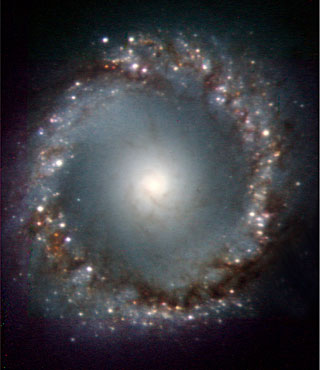I'm recommending this article by Azra Raza from
3 Quarks Daily because it's a nice presentation of some of the problems and issues in the "war on cancer":
Rx: The War on CancerHowever, one must avoid overly simplistic views of the situation. The war metaphor, to begin with, is a terrible framing of the issue. Obviously it appeals to the simple-minded American infatuation with all things militaristic, as do the other "wars" on poverty, drugs, crime, terror, and so forth. But the metaphor is badly chosen.
The Manichaean good-vs-evil framing of all those efforts is just wrong. Not that there is anything good to be said about cancer (or poverty or terror), but anthropomorphizing any of those things as if they were enemies to be "attacked" and eventually to be "defeated" is sloppy thinking. There does not exist some evil force in the universe which is tormenting unfortunate humans with these travails. So, there is nothing to "defeat". Rather, all of these things are problems to be solved.
Note that the effort to put a man on the Moon was not characterized as a war against anything, such as the wicked gravity well in which we happen to live. It was not a "war on gravity". It was simply a problem to be solved.
Solving problems takes time, not military prowess. Solving hard problems takes a lot of time. Perhaps, with respect to cancer, we are just being too impatient.
All that said, I will utilize the military metaphor anyway. As Sun Tzu wrote in the
Art of War,
So it is said that if you know your enemies and know yourself, you will not be imperiled in a hundred battles; if you do not know your enemies but do know yourself, you will win one and lose one; if you do not know your enemies nor yourself, you will be imperiled in every single battle.
Thus what we need most is to understand the "enemy", cancer, better before we can "defeat" it. You might think that after all these decades and all the billions of dollars (and Yen, and Pounds, and Deutschmarks, and Euros) spent we would understand cancer thoroughly. Clearly we do not.
And it certainly isn't because everyone's scientists are venal or incompetent. (They aren't.) It's because the problem is very hard. The problem, really, is to understand in great detail how cells work, and in particular all the complexities of gene expression and regulation.
But how could we understand those at this point? We have had a relatively complete map of the human genome's nucleotides for only five years. We still don't know where all the genes are, much less what they all do, and much, much less how crucial gene programs work -- how one or several genes together trigger (or suppress) the expression of other genes in a lengthy cascade.
Cancer is ultimately a problem of gene programs gone awry due to damage in a handful of program instructions.
To "defeat" cancer, we first need to identify the failing programs. We then need to devise a strategy to neutralize the ill effects of the failing programs. And finally we need to formulate effective interventions that implement a strategy to do what we want without causing other problems.
Anyone who's ever had to debug and correct problems in an early computer, where memory is accessed through switches and flashing lights, will appreciate the difficulties.
---------------------------------
Update, November 10
I mistakenly failed to locate the name of the author of the article discussed above, and I apologize for that. The author is Azra Raza. Her brother Abbas kindly wrote to provide some additional information, as follows:
Though I agree that the war metaphor may be badly chosen in the case of cancer, this is a common phrase. The article by my sister that you have linked to is not at all anonymous as you say. On the contrary, her name, Azra Raza, is given right below the post, just like on every other post at 3QD. You can click on our "About Us" page for more info on any author, but since the bios there are short, I don't mind telling you that my sister Azra has been a practicing oncologist and basic scientist for more than a quarter of a century. She has more than 200 full length scientific papers to her name, and there is more about her here, if you want more.
I am, of course, aware that "war on cancer" is a very common expression. I wasn't challenging the use of the phrase in this article, but rather the very fact that it is so common -- because I think it improperly frames the issue.
Framing the issue in terms of a "war" inevitably seems to raise the wrong question. Namely, if we've been waging this "war" for almost 35 years, why haven't we "won" yet? Perhaps the misconceptions people have about America's (or science's) prowess cause them to react too strongly to the fact that this "war" hasn't yet been "won", and therefore to believe that serious mistakes have been made.
It certainly may be that there have been serious errors in judgment that various parties have made in the conduct of this "war". I'm very interested to hear anything about that which people closer to the fray can speak of. However, I still have the feeling that most people have simply underestimated the difficulty of the problem, and that with time we will solve it, more or less along the lines I suggested above.
---------------------------------
Tags:
cancerLabels: cancer







 Subscribe to posts
Subscribe to posts


 Google
Google Delicious
Delicious Diigo
Diigo Twine
Twine StumbleUpon
StumbleUpon






